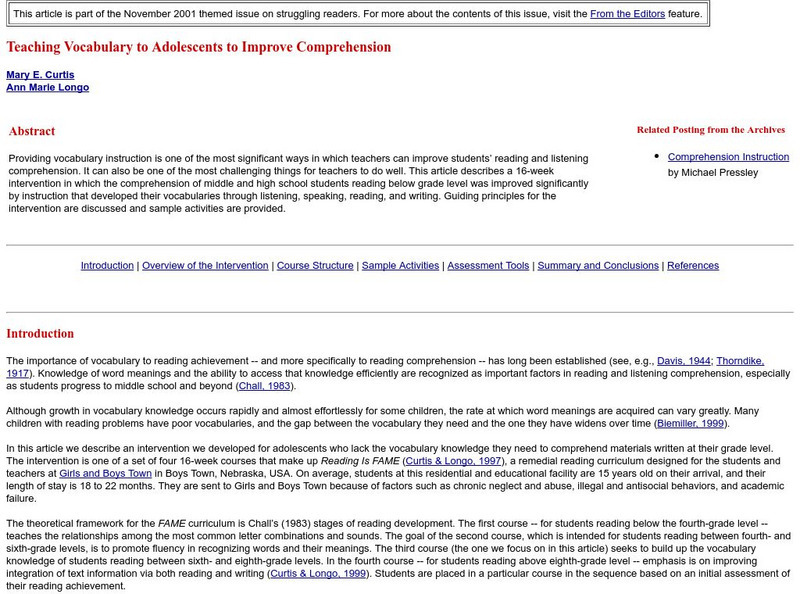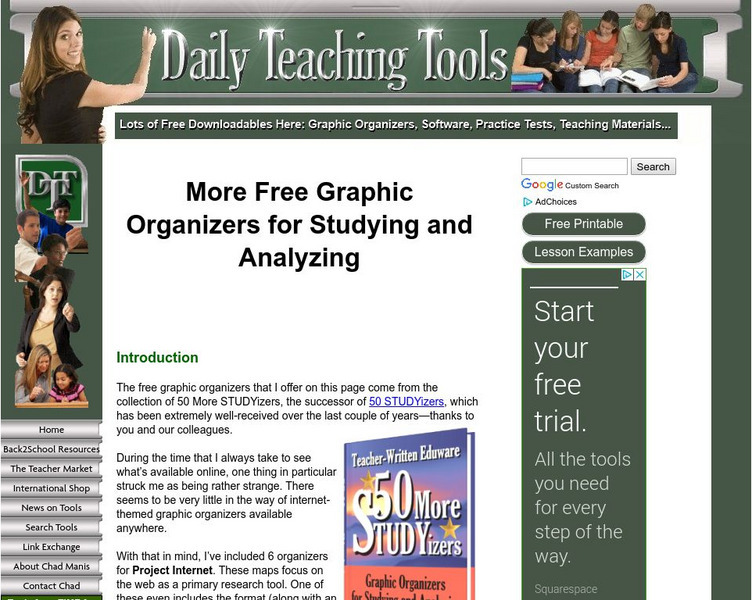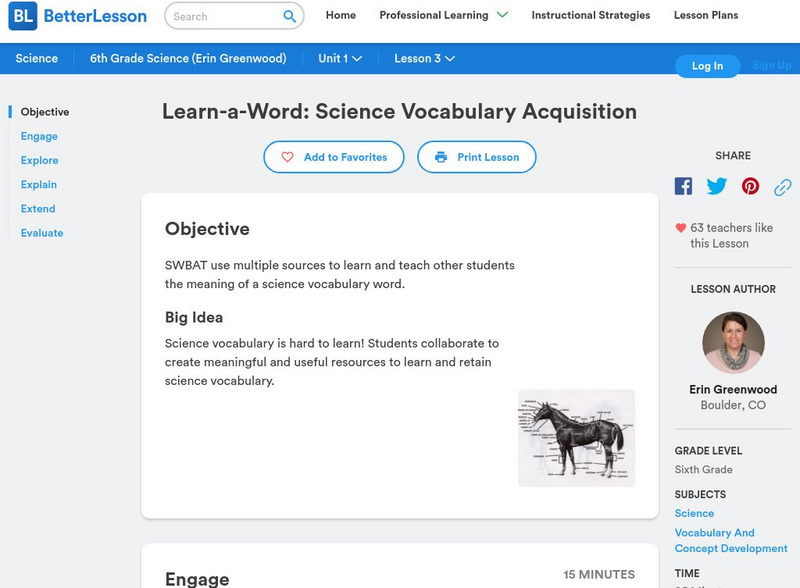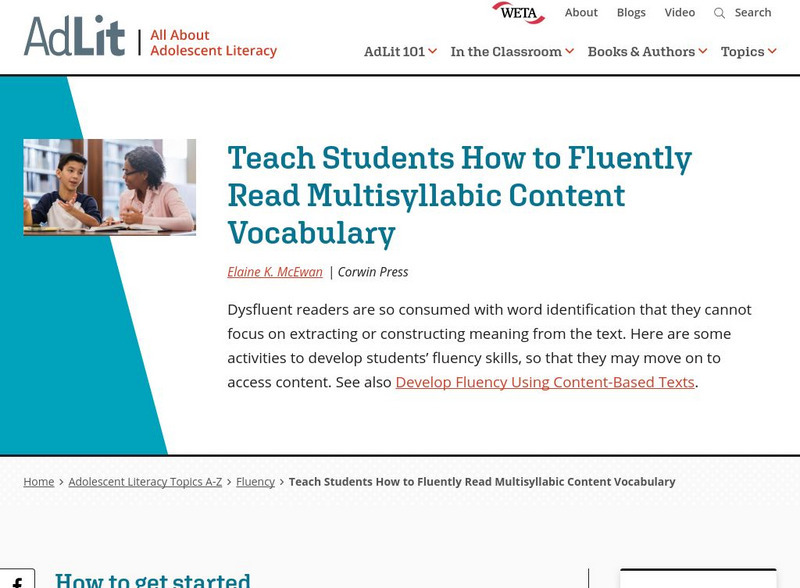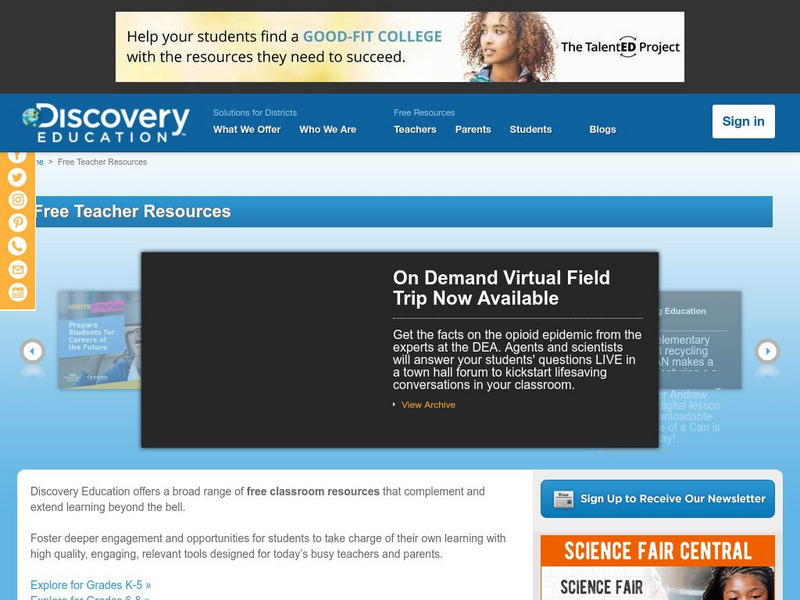International Reading Association
Reading Online: Teaching Vocabulary to Adolescents to Improve Comprehension
An article highlighting the improvements of middle and high school students' reading comprehension through a sixteen-week program. Includes introduction, overview of the intervention, course structure, sample activities, assessments, and...
AdLit
Ad lit.org: Teach Vocabulary by Building Background Knowledge
Students need to develop an extensive vocabulary to read with fluency. In turn, fluency in reading leads to increased comprehension. Fluency also comes from the written language of the reader since the student writes words he or she...
Ingles Mundial
Ingles Mundial: Family (La Familia) Vocabulary
Great tool for teaching Spanish-speaking English language learners (ELL). This vocabulary lesson focuses on family vocabulary. A variety of interactive, self-correcting exercises are provided to reinforce the material presented. Audio is...
Daily Teaching Tools
Daily Teaching Tools: Vocabulary Charts
This Daily Teaching Tools resource provides two reproducible charts for vocabulary acquisition. Students can complete these charts as they encounter new vocabulary words or as a means of reviewing before a vocabulary quiz or test.
ReadWriteThink
Read Write Think: Vocabulary Instruction Lesson Plan
This lesson plan uses a virtual trip to the moon to teach vocabulary practice. Included in the lesson plan is an overview, practice, objectives, resources, preparation, and more.
Texas Education Agency
Texas Gateway: Teaching Adolescents Who Struggle With Literacy
There are five components of reading instruction for struggling adolescent readers: Word identification/decoding, Vocabulary, Comprehension, Fluency, and Engagement/motivation. These components are discussed and a video of middle school...
Better Lesson
Better Lesson: Learn a Word: Science Vocabulary Acquisition
In this activity, young scholars use multiple sources to learn the meanings of science words, collaborating to create useful resources for learning and retaining science vocabulary.
AdLit
Ad lit.org: Teach Students How to Fluently Read Multisyllabic Content Vocabulary
Dysfluent readers are so consumed with word identification that they cannot focus on extracting or constructing meaning from the text. Here are some activities to develop students' fluency skills, so that they may move on to access content.
Reading Rockets
Reading Rockets: Teach Expository Text Structure to Facilitate Comprehension
Expository text can be challenging to young readers because of the unfamiliar concepts and vocabulary it presents. Discover ways to help your students analyze expository text structures and pull apart the text to uncover the main idea...
Discovery Education
Discovery Education: The Great Gatsby
Very detailed lesson plans for teaching the novel. Includes audio links for the pronunciation of vocabulary words, discussion questions, and classroom activities.
Better Lesson
Better Lesson: Gold Collar Jobs
As we expose our learners to different ideas, it is important they see that not all words come from books- some of our best ideas come from conversations and things we see or do! A quick, easy and free way to help our students get...
Other
National Association of Conservation Districts: Dig Deeper:mysteries in the Soil
A collection of facts, lesson resources, and links for teaching the science of soil. The teacher's guide includes overviews for each grade level booklet, next generation science standards, activities, vocabulary words, literature...
Other
Sorico: Describing and Comparing Measurable Attributes
The following unit can be used to teach measurable attributes. Students will describe and compare two objects with a measurable concept in common using direct comparison. Included are necessary vocabulary, a scavenger hunt, and links to...
Other
Balanced reading.com: Decoding
What is decoding? Use this site to find the answer to this important question. This website focuses on a balanced reading approach to learning.
